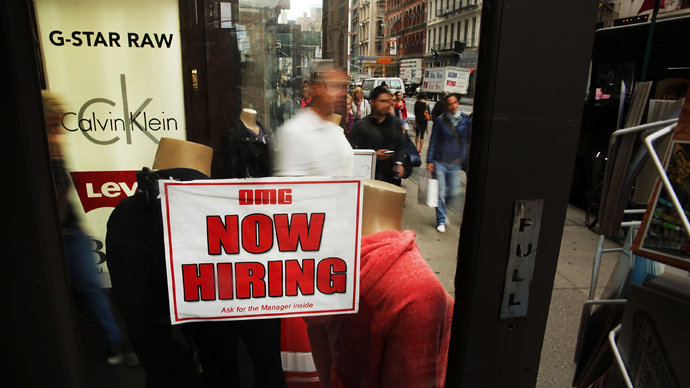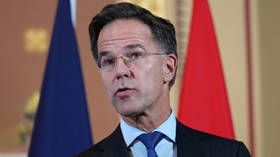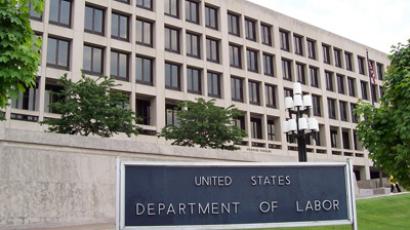Unemployed Americans increasingly abandoning job search

The latest job creation numbers from the US Bureau of Labor Statistics fell short of experts’ expectations, and a growing desire among young Americans to simply not work is being blamed.
Last week, analysts at the Pew Research Center examined the Labor Bureau’s job data for the month of October and said that an increasing number of Americans aged 16-24 are throwing in the towel, writing off the prospect of applying to jobs altogether and becoming, as far as government statistics go, faceless figures in the category of individuals who are “not in the labor force.”
Those latest Labor Bureau numbers suggest that slightly more than 92 million Americans, or 37 percent of the population over the age of 16, are neither employed nor unemployed, Drew Desilver wrote for Pew’s Fact Tank.
While that’s not exactly a record-setting statistic, Desilver
wrote, a look at the data more closely reveals that Americans in
particular are increasingly avoiding work.
“Last month, according to BLS, 85.9 million adults didn’t
want a job now, or 93.3 percent of all adults not in the labor
force,” he wrote. “But let’s look in particular at the
youngest part of the eligible workforce. The share of 16- to
24-year-olds saying they didn’t want a job rose from an average
29.5 percent in 2000 to an average 39.4 percent over the first 10
months of this year. There was a much smaller increase among
prime working-age adults (ages 25 to 54) over that period. And
among people aged 55 and up, the share saying they didn’t want a
job actually fell, to an average 58.2 percent this year.”
Indeed, the numbers show that there has been a 10 percentage
point surge in 14-years’ time, during which millions of
college-age would-be workers have chosen to not enter the work
force whatsoever. Although the US has experienced a significant
uptake in recent months with respect to jobs creation on the
heels of a recession, young Americans in particular are
apparently parting ways with the workforce in increasing numbers.
In The Wall Street Journal this month, Ben Casselman
wrote that a recently published paper courtesy of economists
Regis Barnichon and Andrew Figura suggested that the number of
people who simply “don’t want a job” has been on the rise for
decades, as fewer people pursue employment.
“What’s behind the decline? The obvious answer is the aging
of the Baby Boom generation. But while demographics help explain
the overall decline in labor-force participation, it doesn’t
explain the shift within the ranks of the ‘not in the labor
force,’” Casselman wrote.
“Rather, the decline in those who want a job is concentrated
among three groups: Young people, women and the less educated.
The decline among young people mirrors a long-term decline in
employment rates among young adults, especially teenagers. The
reasons for that aren’t entirely clear, but may include a rising
focus on college attendance, the disappearance of many
low-skilled jobs and cultural factors that put less of a premium
on working while in school,” he speculated.
According to data from the Labor Department and Barnichon,
roughly 10 percent of Americans who were out of the labor force
in the late 1970s said they “want a job now.” That statistic
shrank to just below six percent on the eve of the recession, and
has barely beaten seven percent in recent months.














